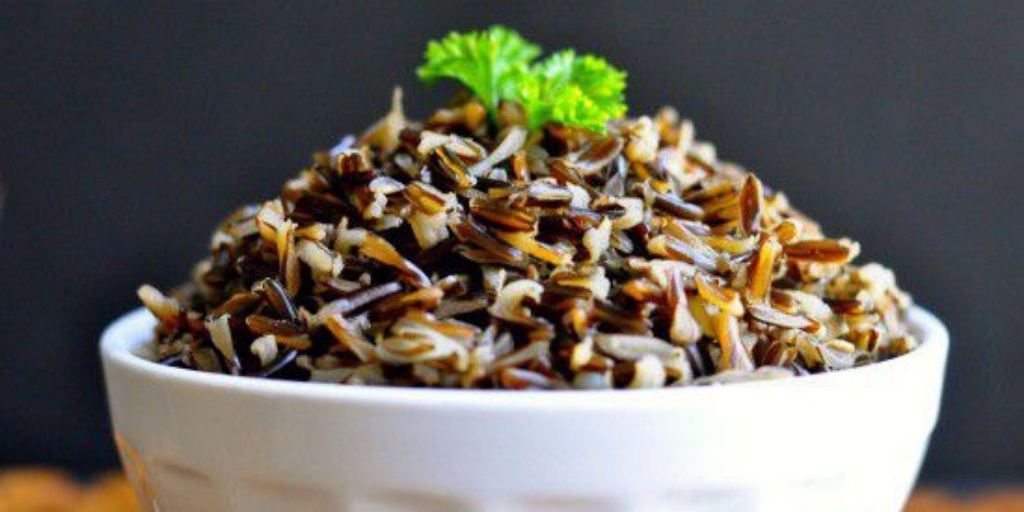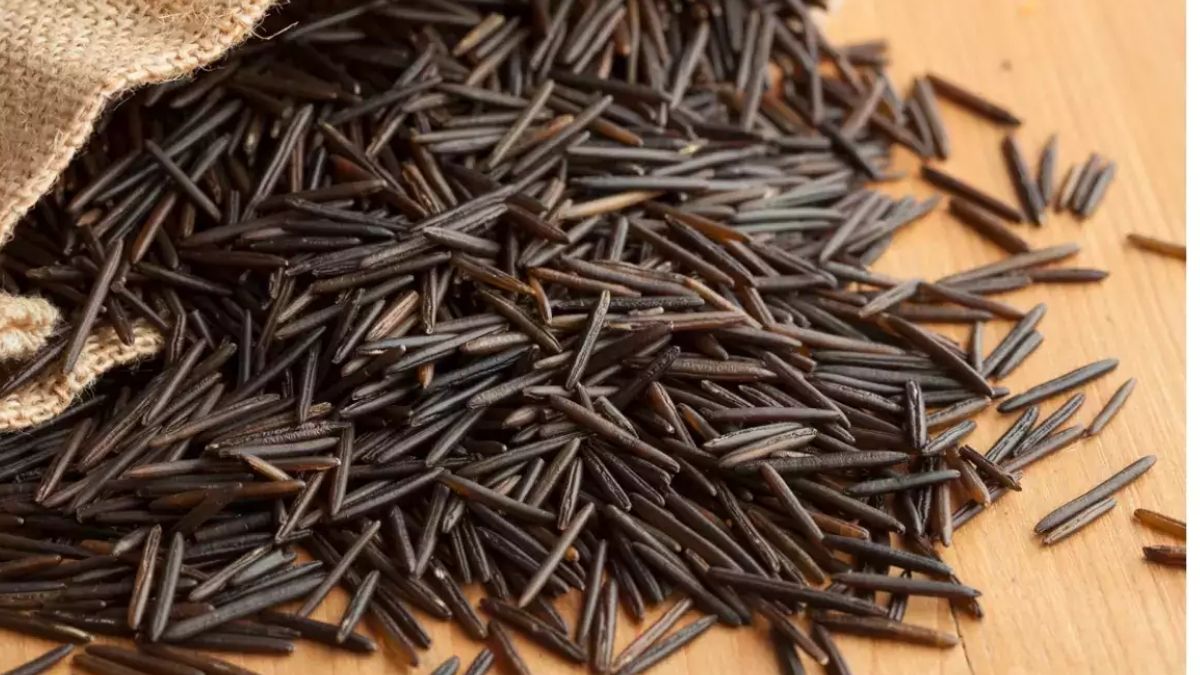Cooking wild rice is straightforward once you understand the techniques for getting it to turn out precisely every time. Cooked wild rice provides a little over 3 cups from one cup of raw wild rice (approx. four servings). It has a lot of protein and fiber, low in fat. Wild rice is gluten-free, making it suitable for a variety of diets. Wild rice has a similar nutritional profile to quinoa, but it has a distinct flavor profile. Wild rice, both real wild and developed types, is recognized for its nutty, toasted flavor. Thanks to the chewy outer coating, every bite is gratifying, which houses a deliciously soft kernel.
Wild rice is a stiff seed that takes a long to absorb water. Wild rice can take 45 minutes to an hour to thoroughly cook and become non-crunchy. I prefer to cook wild rice in a large amount of water, similar to pasta, because the cooking time can vary, and I don’t want to be connected to the stove the entire time. Because wild rice takes so long to cook, I usually make a large batch at once and store the rest for later meals. You can warm the frozen rice in the microwave before using it or throw it immediately into a pot of soup.
What Is Wild Rice?
Wild rice isn’t really “rice,” but rather the seed of an aquatic grass that grows mainly in North America’s Great Lakes region. It was formerly a mainstay of the Native Americans who lived in this area, but nowadays, most wild rice sold in supermarkets is explicitly grown in Minnesota and California.
Gluten-free, low-fat, and abundant in both lysine (an amino acid) and fiber, wild rice is a great choice. It also has a high protein content, ranking behind oats but ahead of quinoa in terms of protein content. It has a slightly chewy texture and a nutty, earthy flavor. It can be eaten on its own, but the flavor is quite strong (and the cost sometimes prohibitive). Wild rice is more commonly used in meals with other ingredients, such as pilafs with other grains, salads, soups, casseroles, and stuffings.
How To Cook Wild Rice?
Boiling wild rice on the stove is the most popular way of preparation. It can, however, be prepared in a rice cooker, pressure cooker, microwave, or oven-baked and still be delicious. Once cooked, wild rice can be used as a side dish, in salads, soups, casseroles, or as a main meal with an endless variety of toppings.
Wild rice is a stiff seed that takes a long time to absorb water. In order for wild rice to be completely cooked and no longer crunchy, it can take anywhere from 45 minutes to an hour. Cooking wild rice in a large amount of water, similar to how you would cook pasta, is preferable because the cooking time can vary and I don’t want to be confined to the stove the entire time.
Because wild rice cooks at such a leisurely rate, I frequently prepare a large amount at once and freeze the remainder for use in future meals. The frozen rice can be reheated briefly in the microwave before using, or it can be added directly to a pot of soup without being thawed first.
Tips For Cooking Wild Rice
Here are some ideas for what to put in wild rice, whether it’s being served as a side dish or as the main course:
- Dried cranberries, fresh mango, onion, celery, carrots, corn, olive oil or butter, chopped toasted pecans, minced scallions, parsley leaves, thyme, mushrooms, lemon, mint leaves, broccoli, cheddar cheese, tomatoes, bleu cheese, melted brie, bacon, sweet bell peppers, turkey breast, bread crumbs, pine nuts, chopped kale, pears
- Use your imagination! It’s simple to mix and match these toppings to create endless flavor combinations. Do you require something a little more unique? In any of these recipes, replace the water with an equal amount of chicken, beef, or vegetable broth.
- Wild rice is a versatile ingredient that can be used as a main meal, a side dish, or a supplement to soups or casseroles.
- Wild rice can be cooked on the stovetop for more control, steamed in a rice cooker for hands-free cooking, microwaved wild rice for quick and easy cooking, and baked wild rice for hearty meals.
Is It Necessary To Soak Wild Rice Before Cooking It?
Soaking grains overnight reduces the amount of time it takes to cook them. In addition, according to Sarah Britton’s cookbook My New Roots, soaking grains before boiling helps eliminate some of the naturally occurring phytic acid, which inhibits mineral absorption and breaks down some of the difficult-to-digest characteristics.
Soaked wild rice cooks 50 percent faster than unsoaked wild rice. You may, however, produce wild rice without soaking it, and it will simply take longer to prepare. In any case, I strongly advise giving it a thorough wash before cooking.
If you choose to soak your wild rice, I recommend putting it in a bowl, covering it with water, and leaving it on the kitchen counter for no more than 2-3 hours. The wild rice will burst open if you soak it longer before cooking.
What Are The Health Benefits Of Wild Rice?
Wild rice is a well-balanced diet with a good amount of protein and fiber. Furthermore, it contains a minimal number of calories.
Manganese is a micronutrient found in abundance in wild rice. Manganese is an antioxidant that helps maintain the mitochondria’s health in your cells, and manganese has also been linked to the maintenance of a healthy metabolism. Because wild rice is gluten-free, it is a suitable alternative for people living with celiac disease.
Some other wild rice health benefits include:
Heart Health
Wild rice has been demonstrated to have potent antioxidant and lipid-lowering effects in studies. It also contains a lot of nutritional fiber, and getting appropriate dietary fiber is vital for keeping cholesterol low.
Diabetes
Alpha Lipoic Acid is abundant in wild rice (ALA). According to several studies, ALA is advantageous to patients with type 2 diabetes, and it could help the body manufacture more insulin and lessen the symptoms of diabetic nerve damage.
Weight Loss
Alpha Lipoic Acid (ALA) is abundant in wild rice (ALA). According to some evidence, people with type 2 diabetes may benefit from ALA, and it can improve the body’s ability to manufacture insulin and alleviate diabetic nerve damage symptoms.
Brown Rice Or Wild Rice: Which Is Better?
Wild rice is an excellent choice to lose weight and increase your protein consumption. Wild rice has half the calories and doubles the protein of brown rice in a single serving. Wild rice is a unique grain that is chewy and delicious. It provides more protein than conventional rice and several key elements, and a significant level of antioxidants. Furthermore, regular use of wild rice may help to enhance heart health and reduce the risk of type 2 diabetes.
Wild rice is an excellent choice to lose weight and increase your protein consumption. Wild rice has half the calories and doubles the protein of brown rice in a single serving. Wild rice also contains all nine necessary amino acids required for muscle growth, metabolism, mood, and immune system regulation.
Rice is high in fiber, antioxidants, and minerals like manganese, magnesium, and phosphorus in both forms. Brown rice has more B vitamins than wild rice (which makes it a good choice if you’re following a meat-free diet), so switching between the two won’t cause any problems. Both wild rice and brown rice can help diabetics and pre-diabetics lower their blood sugar levels. By the way, here’s how to properly cook wild rice.
What Is The Most Effective Technique To Season Wild Rice?
To season and flavor your cooked wild rice meal, try one of the following methods:
Use Broth
While wild rice can quickly be cooked in water, I highly urge that you try it with vegetable or chicken stock instead of water. I usually create vegetable stock out of the scraps from the vegetables I eat throughout the week and store it in jars for use throughout the week. This is a straightforward method of infusing flavor into wild rice.
Toss The Rice With Veggies
Sautéing the rice with vegetables is one of the most acceptable methods to enhance the flavor, as I demonstrated in my Wild Rice Pilaf dish.
Combine It With Nuts And Herbs For A Unique Flavor
Wild rice’s earthy taste qualities are enhanced by adding fresh herbs and nuts to the dish. This is one of my favorite ways to serve wild rice, especially during holidays. This recipe for Wild Rice Stuffing has always been a favorite in our household.
Conclusion
While wild rice is delicious on its own, it also makes a great addition to salads, soups, and casseroles. Its rich and earthy aromas instantly transform a bland dish. Consider this page your How To Cook Wild Rice guide if you agree. I’ll demonstrate how to make it on the stove, in rice, microwave, and pressure cooker. Wild rice isn’t riced at all. It’s a type of aquatic grass, and it takes time to process it. Cooked wild rice offers 30 percent fewer calories and 40 percent more protein than brown rice. There’s also more fiber, potassium, and zinc in it. Brown rice, on the other hand, contains six times the amount of manganese, a mineral required for bone building and metabolic function.

